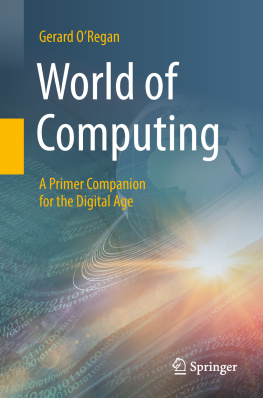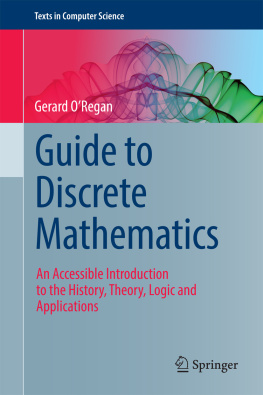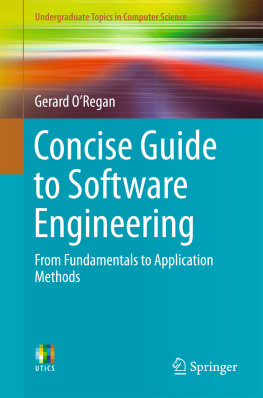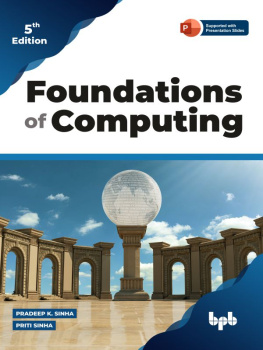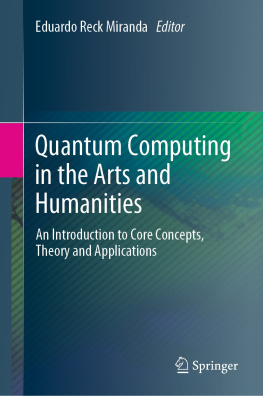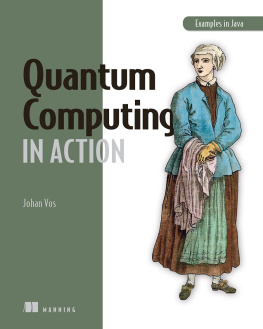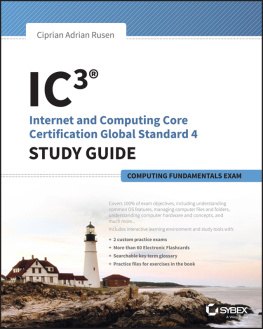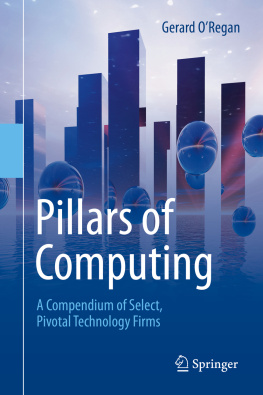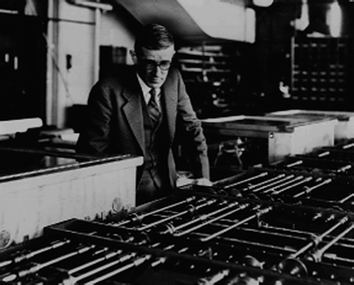1.1 Introduction
It is difficult to think of western society today without modern technology. We have witnessed in recent decades a proliferation of high-tech computers, mobile phones, text messaging, the Internet, the World Wide Web and social media. Software is pervasive and it is an integral part of automobiles, airplanes, televisions and mobile communication. The pace of change is relentless, and communication today is instantaneous with technologies such as Skype, Twitter and WhatsApp.
Today, people may book flights over the World Wide Web as well as keeping in contact with friends and family members around the world. In previous generations, communication involved writing letters that often took months to reach the recipient. However, todays technology has transformed the modern world into a global village, and the modern citizen may make video calls over the Internet or post pictures and videos on social media sites such as Facebook and Twitter. The World Wide Web allows business to compete in a global market.
A computer is a programmable electronic device that can process, store and retrieve data. It processes data according to a set of instructions or program. All computers consist of two basic parts namely hardware and software . The hardware is the physical part of the machine, and the components of a digital computer include memory for short-term storage of data or instructions; an arithmetic/logic unit for carrying out arithmetic and logical operations; a control unit responsible for the execution of computer instructions in memory; and peripherals that handle the input and output operations. Software is a set of instructions that tells the computer what to do.
The original meaning of the word computer referred to someone who carried out calculations rather than an actual machine. The early digital computers built in the 1940s and 1950s were enormous machines consisting of thousands of vacuum tubes. They typically filled a large room but their computational power was a fraction of the personal computers and mobile devices used today.
There are two distinct families of computing devices namely digital computers and the historical analog computer . The earliest computers were analog not digital, and these two types of computer operate on quite different principles.
The computation in a digital computer is based on binary digits: i.e. 0 and 1. Electronic circuits are used to represent binary numbers, with the state of an electrical switch (i.e. on or off) representing a binary digit internally within a computer.
A digital computer is a sequential device that generally operates on data one step at a time, and the earliest digital computers were developed in the 1940s. The data are represented in binary format, and a single transistor (initially bulky vacuum tubes) is used to represent a binary digit. Several transistors are required to store larger numbers.
An analog computer operates in a completely different way to a digital computer. The representation of data in an analog computer reflects the properties of the data that are being modelled. For example, data and numbers may be represented by physical quantities such as electric voltage, whereas a stream of binary digits is used to represent them in a digital computer.
1.2 Analog Computers
James Thompson (who was the brother of the physicist Lord Kelvin) did early foundational work on analog computation in the nineteenth century. He invented a wheel-and-disk integrator, which was used in mechanical analog devices, and he worked with Kelvin to construct a device to perform the integration of a product of two functions. Kelvin later described a general-purpose analog machine (he did not build it) for integrating linear differential equations. He built a tide predicting analog computer that remained in use at the Port of Liverpool up to the 1960s.
The operations in an analog computer are performed in parallel, and they are useful in simulating dynamic systems. They have been applied to flight simulation, nuclear power plants and industrial chemical processes.
Vannevar Bush at the Massachusetts Institute of Technology developed the first large-scale general-purpose mechanical analog computer. Bushs Differential Analyser (Fig. ) was a mechanical analog computer designed to solve sixth-order differential equations by integration, using wheel-and-disk mechanisms to perform the integration. The mechanisation allowed integration and differential equations problems to be solved more rapidly. The machine took up the space of a large table in a room and weighed about 100 tonnes.
Fig. 1.1
Vannevar Bush with the Differential Analyser
It contained wheels, disks, shafts and gears to perform the calculations. It required a considerable set-up time by technicians to solve an equation. It contained 150 motors and miles of wires connecting relays and vacuum tubes.
Data representation in an analog computer is compact, but it may be subject to corruption with noise. A single capacitor can represent one continuous variable in an analog computer. Analog computers were replaced by digital computers shortly after the Second World War.
1.3 Digital Computers
Early digital computers used vacuum tubes to store binary information, and a vacuum tube may represent the binary value 0 or 1. These tubes were large and bulky and generated a significant amount of heat. Air conditioning was required to cool the machine, and there were problems with the reliability of the tubes.
Shockley and others invented the transistor in the late 1940s, and it replaced vacuum tubes from the late 1950s onwards. Transistors are small and consume very little power, and the resulting machines were smaller, faster and more reliable.
Integrated circuits were introduced in the early 1960s, and a massive amount of computational power could now be placed on a very small chip. Integrated circuits are small and consume very little power, and may be mass-produced to a very high-quality standard. However, integrated circuits are difficult to modify or repair, and are nearly always replaced on failure.
The fundamental architecture of a computer has remained basically the same since von Neumann and others proposed it in the mid-1940s. It includes a central processing unit which includes the control unit and the arithmetic unit, an input and output unit and memory.
1.3.1 Vacuum Tubes
A vacuum tube is a device that relies on the flow of an electric current through a vacuum. Vacuum tubes ( thermionic valves ) were widely used in electronic devices such as televisions, radios and computers until the invention of the transistor.
The basic idea of a vacuum tube is that the current passes through the filament, which then heats it up so that it gives off electrons. The electrons are negatively charged and are attracted to the small positive plate (or anode) within the tube. A unidirectional flow is thus established between the filament and the plate. Thomas Edison had observed this while investigating the reason for breakage of lamp filaments. He noted an uneven blackening (darkest near one terminal of the filament) of the bulbs in his incandescent lamps, and noted that current flows from the lamps filament and a plate within the vacuum.

